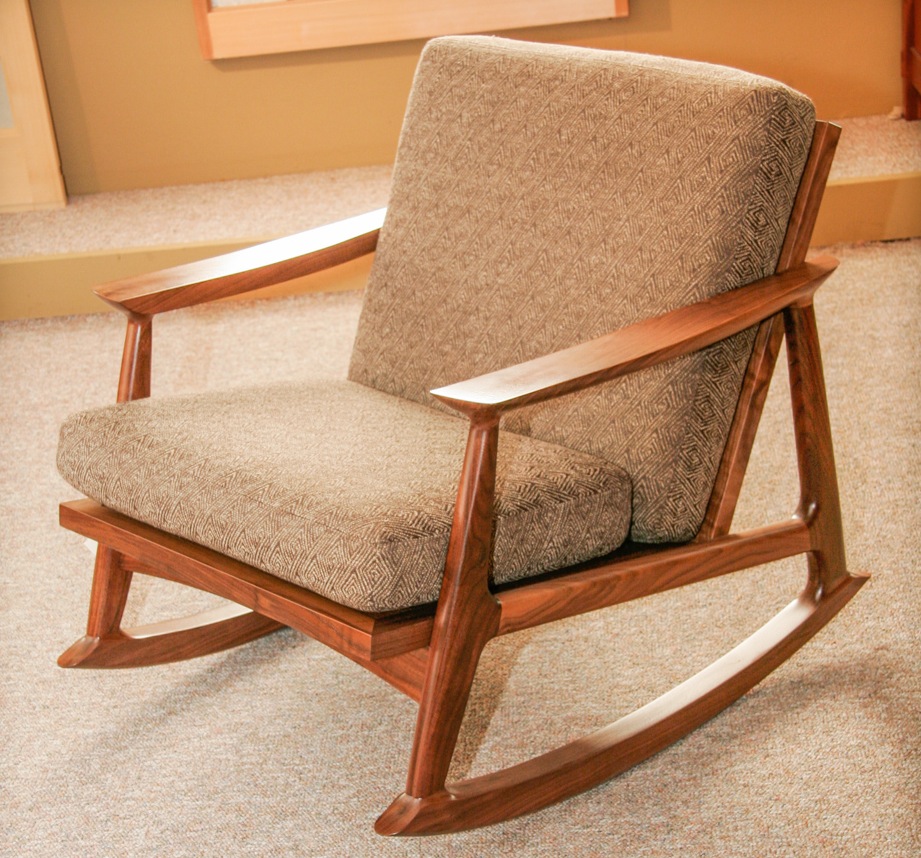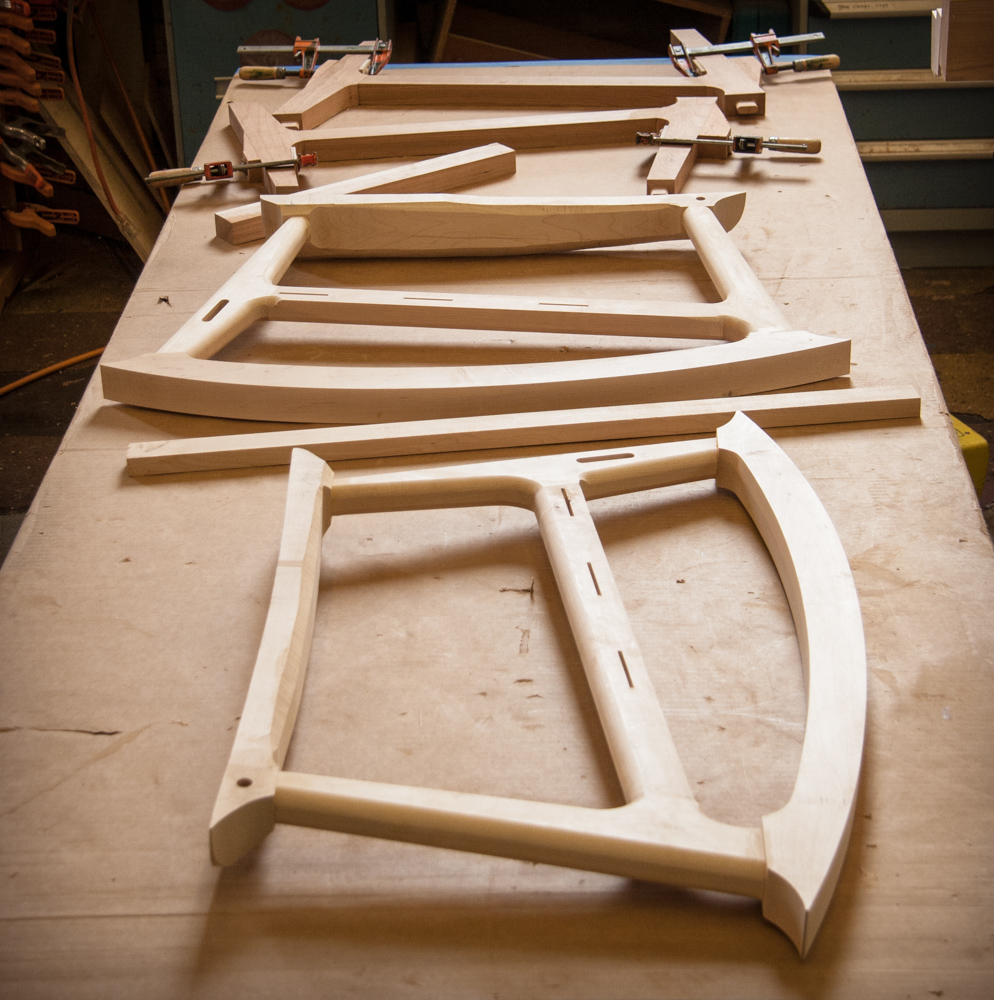Rocking Out with the Ultra-Cool Masaya Chair
 |
Is there any better symbol than a rocking chair for the lace-curtain, Victorian formality against which mid-century modern style rebels? Within the spacious casualness in an Eichler or Streng interior, a traditional straight-backed wooden rocker looks so awkward and uncomfortable it’s like trying to lounge around in a buttoned-up shirt collar a size too small. But it doesn’t have to be.
Berkeley Mills’ Masaya rocker recently caught my eye on their Facebook page because it looked like it could have been made by Ole Wanscher. Its low-slung profile and angular lines give it a distinctly mid-century modern look. But as the folks at Berkeley Mills explained to me, it’s also designed with comfort in mind, a bit like the organic functionalism of Hans Wegner.
For example, the back and seat cushions can be swapped out to adjust for the sitter’s height. “Somebody six-foot-four could be comfortable in it but so could someone five-foot-three,” Berkeley Mills owner Gene Agress said by phone. The inspiration came from that Scandinavian school of design, Agress said. “It’s something I describe as ‘extreme comfort.’ That was a time when furniture was made not just to be architecturally forward but to be very human and comfortable.”
And while the geometry appears simple, production manager Luong Le, who designed and built the chair, explained that perfecting it was acomplex process. “We had to find the center of gravity. If it’s too low, it won’t rock well, and if it’s too high, it will throw you off.” Additionally, Le used Agress as a model to determine the perfect angle for the seat and back so that the user would remain comfortable both while rocking and at rest.
 |
Then there was the curve of the skid itself, which Le redesigned to be more efficient. “The curve has to be just right so it rocks like a pendulum. I made the curve more sharp, and the bottom has a curve, where most of them have a flat spot in the middle,” he said.
Mortise and Tenan joints hold the pieces together, instead of dowels, which Le explained was a complex way to do things because of the odd angles. But in the end, those joints provide better transitions between the pieces, so every plane on the chair is perfectly smooth, Le said. “No machine can produce these parts. It takes a lot of work to create smooth transitions from plane to plane.”
Much of Berkeley Mills’ collection has a modernist bent, but the Masaya chair is much more classically retro than most. Here’s hoping they continue down that road.
- ‹ previous
- 494 of 677
- next ›




